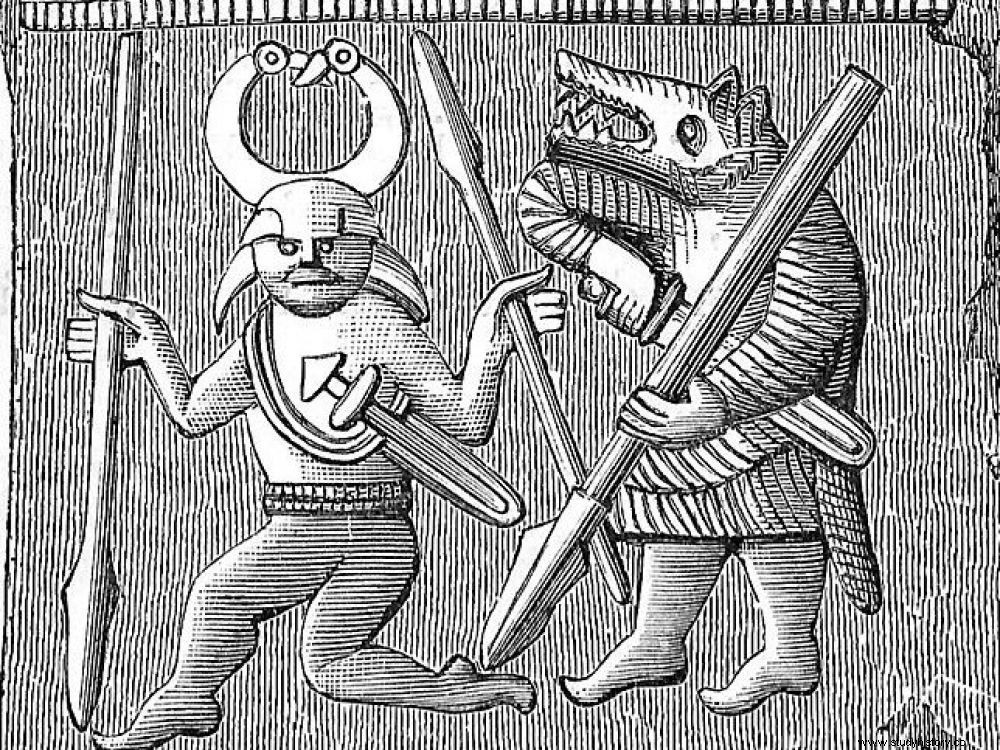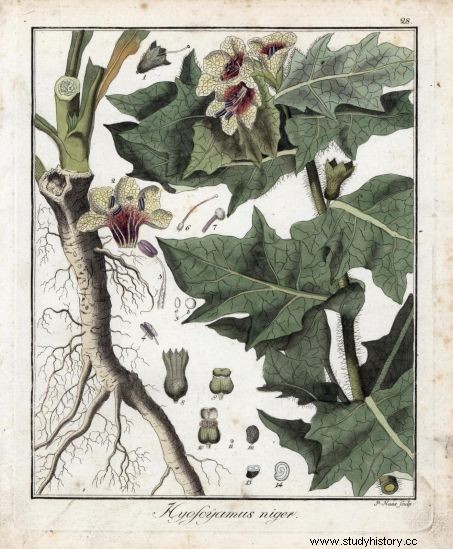The consumption of a plant could have been the source of the "sacred fury" of the berserk warriors described in the Scandinavian sagas.

Reproduction of one of the Torslunda bronze plaques (8th century), discovered in Öland, Sweden. She would represent a berserk warrior or berserker (on the right), in the company of Odin.
It is an astonishing story, oscillating between the real world and the supernatural, that an ethnobotanist has just awakened after the publication of an article in the Journal of Ethnopharmacology . Ancient Scandinavian stories evoke berserks – “bear skins” –, “warriors crazed like wolves” shivering, teeth chattering, hair standing on end, biting their shields. They could be explained by states of trance resulting from the absorption of psychotropic plants! And Henbane (Hyoscyamus niger ) could have been the basis for this potion, according to Karsten Fatur, an ethnobotanist at the University of Ljubljana, Slovenia.
The Berserks, Berserkers or Berserkir
"The exact nature of these berserks, however, remains an unresolved historical controversy “, assures Alban Gautier, professor of medieval history at the University of Caen-Normandie (Calvados), joined by Sciences et Avenir. These fierce characters entering a “sacred fury”, appearing in a certain number of texts from the Middle Ages have the defect of being found either in Frankish, Anglo-Saxon or Byzantine manuscripts –contemporary, but external to the Viking world – or in Scandinavian sagas, written in a Christian context two or three centuries later... "It is thus difficult to say if there was a real military-religious phenomenon behind it, or if it is a literary creation ", continues the medievalist. "The existence of these berserks is not less possible! ", he declares.
A very serious thesis defended by the author Vincent Samson, in 2013. Based on a vast study integrating skaldic poetry, Swedish runic epigraphy and various sources in French, English, German and all the Scandinavian languages, he thus pleaded for the existence of the "warrior-wildlife" or "warrior-bear" of the Berserk phenomenon. "Furious warriors", "adopting the behavior of wild beasts" , their existence could be quite old, and go back to the end of the Roman era to continue during the Viking period (8th-9th century).
It is an astonishing story, oscillating between the real world and the supernatural, that an ethnobotanist has just awakened after the publication of an article in the Journal of Ethnopharmacology . Ancient Scandinavian stories evoke berserks – “bear skins” –, “warriors crazed like wolves” shivering, teeth chattering, hair standing on end, biting their shields. They could be explained by states of trance resulting from the absorption of psychotropic plants! And Henbane (Hyoscyamus niger ) could have been the basis for this potion, according to Karsten Fatur, an ethnobotanist at the University of Ljubljana, Slovenia.
The Berserks, Berserkers or Berserkir
"The exact nature of these berserks, however, remains an unresolved historical controversy “, assures Alban Gautier, professor of medieval history at the University of Caen-Normandie (Calvados), joined by Sciences et Avenir. These fierce characters entering a “sacred fury”, appearing in a certain number of texts from the Middle Ages are especially so in Scandinavian sagas, written in a Christian context two or three centuries later... "It is therefore difficult to say whether there was a real military-religious phenomenon behind it, or whether it is of a literary creation ", continues the medievalist. "The existence of these berserks is not less possible! ", he declares.
A very serious thesis defended by the author Vincent Samson, in 2013. Based on a vast study integrating skaldic poetry, Swedish runic epigraphy and various sources in French, English, German and all the Scandinavian languages, he thus pleaded for the existence of the "warrior-wildlife" or "warrior-bear" of the Berserk phenomenon. "Furious warriors", "adopting the behavior of wild beasts" , their existence could be quite old, and go back to the end of the Roman era to continue during the Viking period (8th-9th century). Contemporary archaeological objects with images of bellicose fighters whose bodies are covered with animal skins are established. Similarly, didn't Sovereign Harald of the Fine Hair have a kind of "praetorian guard" made up of Berserks? Reckless elite warriors attached to the cult of Odin. In German, Odin (Wotan) means "the furious one", "one who is in a trance"; in Anglo-Saxon "Wodan", gave Wednesday (Wednesday):the day of Odin! Screaming, devouring raw meat, fearing neither the edge of weapons nor the burn of fire... The strength of the Berserks would thus have been increased tenfold in combat, where they would have fought in a state of trance.

Black henwort or Hyoscyamus niger. © Leemage/AFP
"Hyoscyamus niger , Henbane would be the best candidate to explain this state of aggressiveness, rather than a fungus often proposed by specialists ", summarizes the author of the study of the Journal of Ethnopharmacology . Comprising a large amount of scopolamine, its activity on the central nervous system would be very powerful. It is also known to produce hallucinations and delusional states. Added in Germany to the manufacture of certain beers in the Middle Ages (ales ), its consumption was banned around 1507, due to the description of the cases of dementia it would have caused.
Although originally a Mediterranean species, Hyoscyamus niger was probably introduced to Scandinavia as early as the Iron Age (Vendel Age, 550-790). A Hyoscyamus niger seeds were later found in association with Viking Age sites in Denmark and Finland, including in graves. What provide some concrete arguments in favor of its use to cause the trance of the Berserks. A "failure" also entered into everyday language in the Anglo-Saxon world... To translate "to go crazy", don't the English use "to go berserk" ? A historical speculation about an ancient Scandinavian trance that shouldn't stop there.
